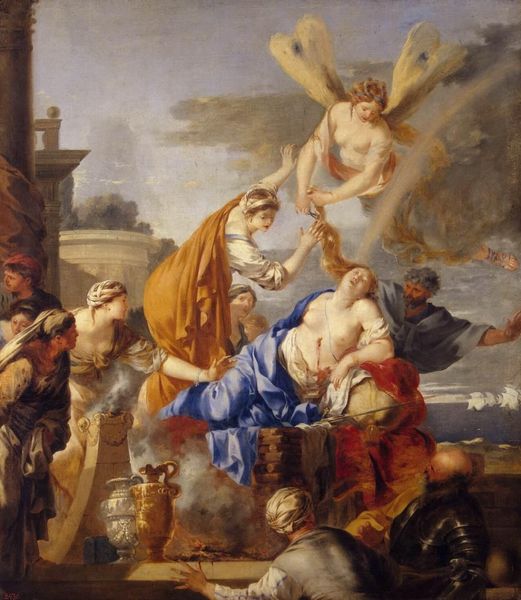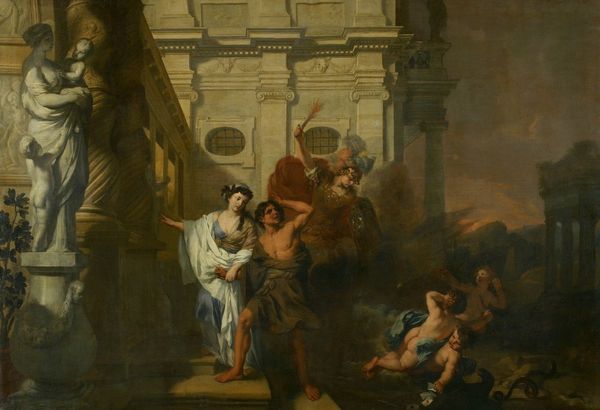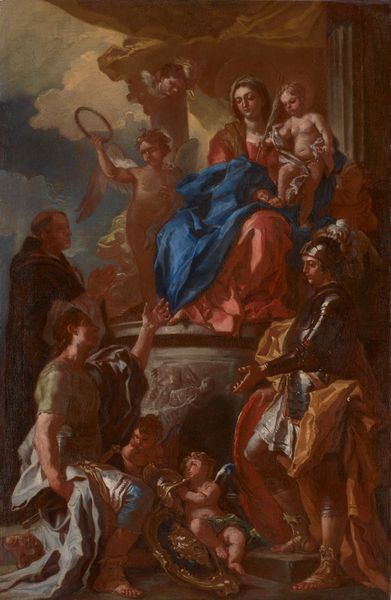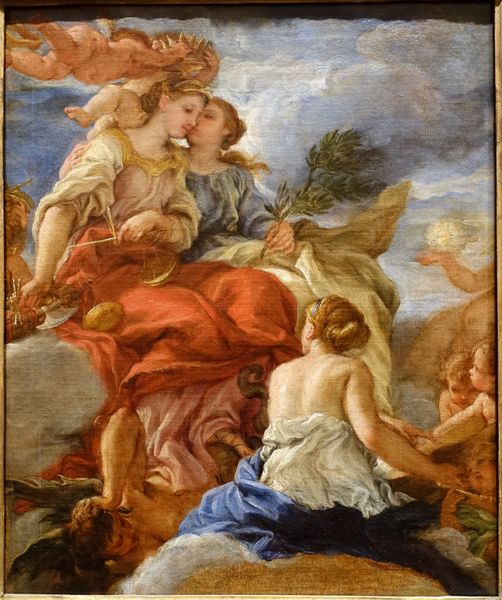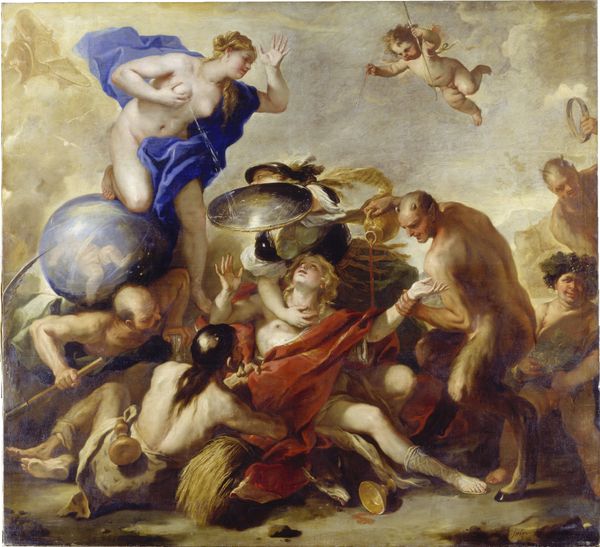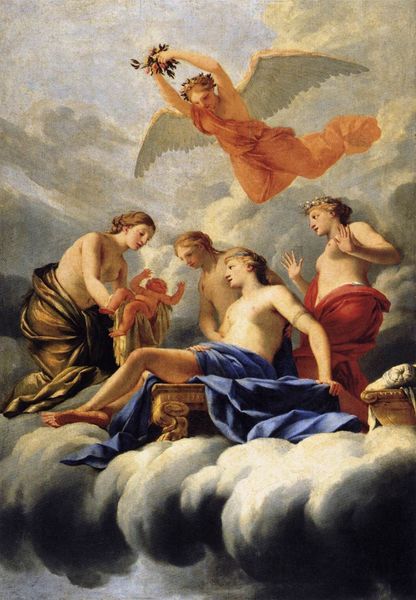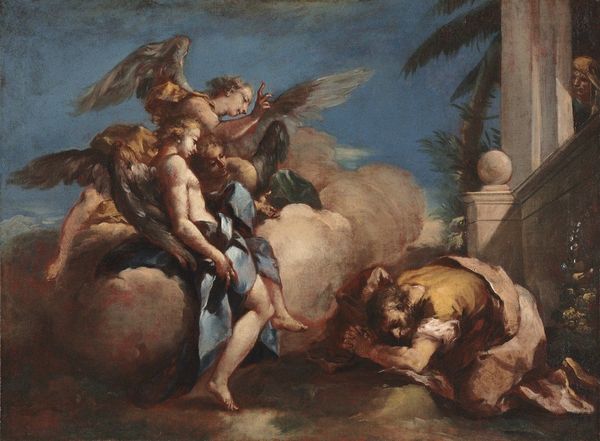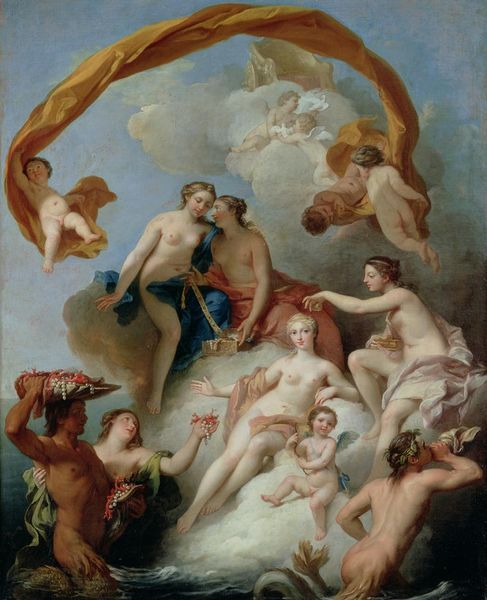
painting, oil-paint
#
portrait
#
allegory
#
baroque
#
painting
#
oil-paint
#
figuration
#
oil painting
#
history-painting
Dimensions: height 146 cm, width 121.5 cm, depth 7.3 cm
Copyright: Rijks Museum: Open Domain
Editor: So, here we have Johannes Voorhout’s oil on canvas, *Allegory of the Treaty of Ryswick, 1697,* created a year after the treaty was signed. It has a decidedly triumphant feel. What strikes you most about this piece? Curator: As a historian, I immediately see it as a highly constructed piece of propaganda, celebrating a fragile peace. Allegories are inherently political, aimed at shaping public perception. Note how the central female figure, likely representing Peace, dominates the composition. Editor: Propaganda? I guess that makes sense. How so? Curator: Consider the context. The Treaty of Ryswick temporarily halted the expansionist ambitions of Louis XIV. Voorhout’s painting is designed to project stability and renewed prosperity, even though the peace was short-lived, only lasting five years before the War of Spanish Succession. The image presents this treaty as divinely sanctioned through visual cues like the angel, and beneficial for all with those cherubic babies. Editor: That’s quite a cynical perspective. So you’re saying it's less about genuine celebration and more about manufacturing consent? Curator: Precisely! Consider the positioning of figures and objects: those are very purposeful, almost theatrical. Is it honest documentation, or political posturing disguised as art? Consider who commissioned it, and for what purpose, and then its entire meaning shifts. Does knowing that impact how you perceive this artwork? Editor: It really does. It makes me question all the celebratory imagery. Thanks for opening my eyes! Curator: It’s a powerful reminder that art often reflects the prevailing power structures and desired narratives. We should examine who benefits from the image being portrayed.
Comments
No comments
Be the first to comment and join the conversation on the ultimate creative platform.


